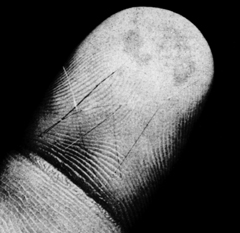© 2006 All Rights Reserved. Do not distribute or repurpose this work without written permission from the copyright holder(s).
Printed from https://danginteresting.com/earths-artificial-ring-project-west-ford/
At the height of the Cold War in the late 1950s, all international communications were either sent through undersea cables or bounced off of the natural ionosphere. The United States military was concerned that the Soviets (or other “Hostile Actors”) might cut those cables, forcing the unpredictable ionosphere to be the only means of communication with overseas forces. The Space Age had just begun, and the communications satellites we rely on today existed only in the sketches of futurists.
Nevertheless, the US Military looked to space to help solve their communications weakness. Their solution was to create an artificial ionosphere. In May 1963, the US Air Force launched 480 million tiny copper needles that briefly created a ring encircling the entire globe. They called it Project West Ford. The engineers behind the project hoped that it would serve as a prototype for two more permanent rings that would forever guarantee their ability to communicate across the globe.
The project itself was a virtually unqualified success. Though the first launch ended in failure, the second launch went without a hitch on 09 May 1963. Inside the West Ford spacecraft, the needles were packed densely together in blocks made of a napthalene gel that would rapidly evaporate in space. This entire package of needles weighed only 20 kg. After being released, the hundreds of millions of copper needles gradually spread throughout their entire orbit over a period of two months. The final donut-shaped cloud was 15 km wide and 30 km thick and encircled the globe at an altitude of 3700 km.
The West Ford copper needles were each 1.8 cm long and 0.0018 cm in diameter and weighed only 40 micrograms. They were designed to be exactly half of the wavelength of 8000 MHz microwaves. This length would create strong reflections when the microwaves struck the copper needles, in effect making them tiny dipole anttennae each repeating in all directions the exact same signal they received.

The first attempt at remote communications using the West Ford belt was made on 14 May, 4 days after the launch. At this point, the dipoles had not completely spread out to fill their entire orbit so they were much more densely spaced than in their final configuration. Using two 18.5 meter microwave dish antennae, Project West Ford engineers managed to send voice transmissions between Camp Parks, California and Millstone Hill, Massachusetts. The voice connection was described as “intelligible” and was transmitted at a data rate of approximately 20,000 bits per second— about the speed of a 1992-era telephone modem. But as the needles continued to disperse to their final cloud, the data rate dropped off significantly, so much so that by June 18th only 400 bits per second could be transmitted. On July 2nd, the experiment was terminated. At this time, the tiny needles were spaced about 400 meters from each other.
Despite its technical success, the ultimate goal behind Project West Ford was never attained. Serious scientific opposition to the project sprung up almost immediately after it was first proposed in the late 1950s. Though West Ford’s cloud of dipoles was carefully designed to return to Earth within a few years of its launch, a fully-functional cloud dense enough for robust communications might be a permanent fixture of Earth’s orbit.
Because of the great distance between the tiny needles, the West Ford belt was visible only in the first few days after launch when the spacing was much smaller. A denser belt intended for permanent communications would probably not have been visible except by very powerful optical telescopes. But, at radio and microwave frequencies, the final dipole clouds may have become scars on the night sky, forever obscuring the universe beyond.

However, it may not have been the opposition from prominent scientists that finally killed Project West Ford’s dream. By 1963, communications satellite technology had become more and more capable. Compared to those sleek products of Space Age technology, the relatively low-tech West Ford dipole cloud was an unsightly dinosaur. However, the West Ford engineers remained convinced of the feasibility of their endeavour, and largely blamed the end of the program on the opposing scientists rather than flaws in their own technology.
Most of the West Ford dipoles re-entered Earth’s atmosphere sometime around 1970, according to theoretical and observational evidence. The needles slowly drifted down to the Earth’s surface, unscathed by re-entry because of their size. Some consideration was given to recovering one or more of the dipoles in order to learn more about the space environment. Calculations showed that as many as five dipoles would have landed per square kilometer in the high Arctic. But the exceptional cost of recovering these tiny needles from the haystack of billions of tons of Arctic snow killed off any practical attempts at recovery. Back in space, the failed 1961 spacecraft and some larger clumps of the 1963 dipoles remain in orbit like so many other pieces of space junk, silently carrying the long-dead hopes of this nearly forgotten experiment.
© 2006 All Rights Reserved. Do not distribute or repurpose this work without written permission from the copyright holder(s).
Printed from https://danginteresting.com/earths-artificial-ring-project-west-ford/
Since you enjoyed our work enough to print it out, and read it clear to the end, would you consider donating a few dollars at https://danginteresting.com/donate ?